
Palermo
Sicily,
Italy
Overview
Palermo is the capital of the Italian island Sicily and lies along the northwestern coast. The city has a rich history, with various cultures including the normans, arabs, greeks and romans influencing the city over the years. The historical center of the city is bustling with churches, plazas, food markets and shopping areas, and provides a perfect location for sightseeing on foot. Mark your map with some of the more famous landmarks like the Castello a Mare, Fontana Pretoria, Mercato di Ballaro and the Palermo Cathedral, and then spend the day wandering the streets in between sights.
Directions
Parking
Trip Reports
We were staying in the Mondelo neighborhood on the northern side of Palermo, and it was roughly a 25 minute drive into the city center. It looked like the most direct route would take us close to the water, so we decided to look for parking around Castello a Mare, an old fortress along the water. Fortunately, we were able to quickly find parking nearby. It was one of those tight spots where you aren't exactly 100% sure you can park there, but we didn't see any signs to the contrary and other cars were parked in the same area.
There was a small entrance fee of 2 euros per person to walk the grounds of Castello a Mare. There were a couple of informational displays that provided history of the fort, and it was a nice stroll through the grounds and see the remains of the fort, but the sights weren't too much more than what you can see from the street.
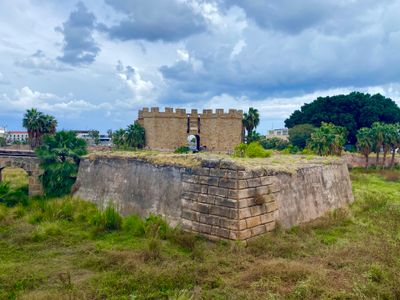
From there, we made our way past the Church of St George and as we were walking down the street heard some beautiful singing coming from a building. As we continued up the street, we noticed a music conservatory, and it felt quite fitting with what appeared to be opera singing resonating through the air as we walked down an old side street.
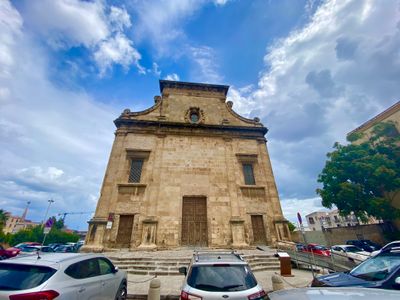
We walked to the Oratorio del SS Rosario in Santa Cita, a prayer room originally built in 1570 and updated in the later 1600's with Rococo style stucco. Prior to our trip, I had read a book about the history of Sicily, and the Oratorio del SS Rosario was mentioned as a place worth seeing - likely not a stop I would have considered on my own. As part of the admission, which I believe was around 6 euros per person, we also got access to the Oratorio del SS Rosario in San Domenico up the street. Both sites were small, and a quick visit, but interesting to see.
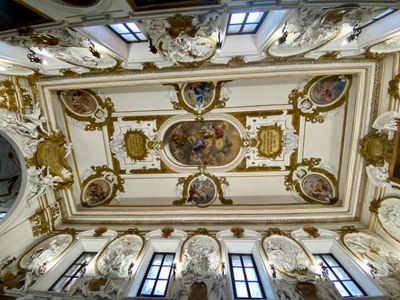
We went through the Vucciria market in search of lunch, and were a bit overwhelmed with the choices. Palermo is famous for its street food, and the street markets are popular places to indulge. After wandering around a bit, we settled on a seafood shop. They had all the seafood laid out on ice, and a woman started grabbing handfuls to be quickly fried. We had indicated enough for two people, but we ended up with enough for four people! I did my best to eat as much as a I could, but there was still a decent amount left.
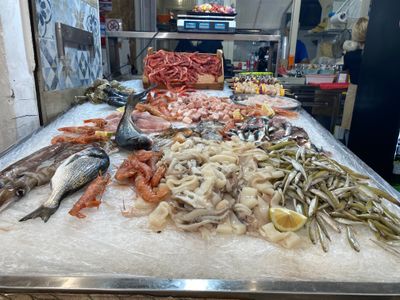
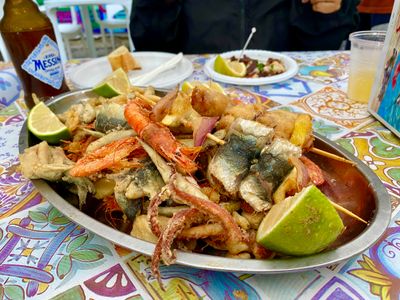
While we were dining on our enormous seafood lunch, a torrential rain came in, collapsing some awnings of restaurants across the street. Fortunately our umbrellas held up and we stayed mostly dry. When the worst of the rain had passed, we set out to the Piazza Pretoria, which has a famous ornate fountain from the 1500's.
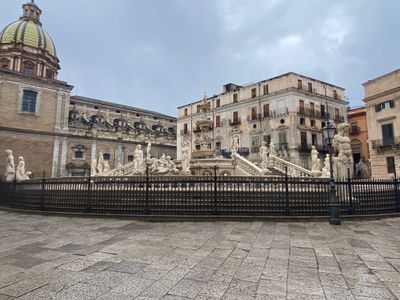
Just past the Piazza Pretoria were the Church of St Mary and the Church of San Cataldo. We didn't go inside either one, but the Church of San Cataldo had a distinctive Arabic look to it, with three red domes on top. Sure enough, it was an Arabic-style Norman church built in 1154. Coming from the United States, it's hard to fathom some of the dates of these structures.
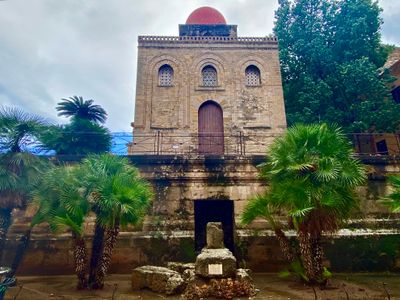
Continuing on, we noticed a large church up ahead and decided to take a look, with my wife commenting that this was probably the last church we needed to go to... The inside of the Chiesa del Gesu di Casa Professa was very impressive, done in a Sicilian baroque style with lots of intricate frescos and marble. We both thought it was more interesting than the Palermo Cathedral we saw later in the day.
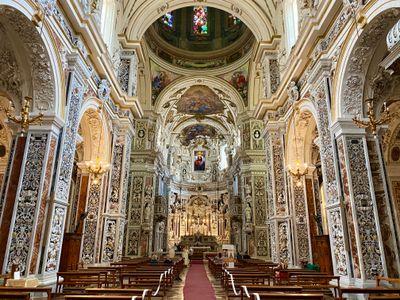
We passed by the very busy Mercato di Ballaro, but decided to skirt around the edges as we had already walked through and grabbed lunch at the Vucciria market earlier in the day.
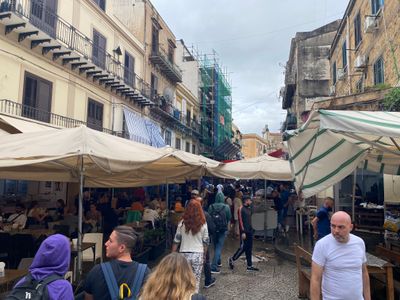
Walking up to the Royal Palace, we noticed a fairly long line for what looked to be tickets. I had wanted to explore the Royal Palace, Palatine Chapel and Norman Palace, but we were both a little drained, and we decided against waiting in line and having to pay 20 euros a piece. In hindsight, it may have been better to visit the Royal Palace at the start of our walking tour.
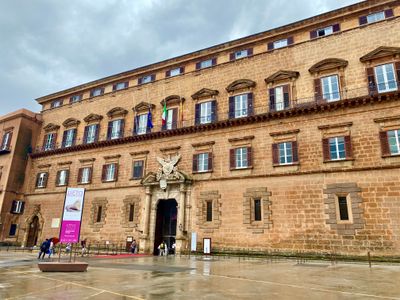
We were ready to make the 2 mile trek back to the car, but I wanted to see one last spot, the Palermo Cathedral. The outside is quite beautiful, and while the inside is less impressive than a couple of the other Baroque style cathedrals we had seen, this church from the 1100's had a lot of history and is worth a visit.
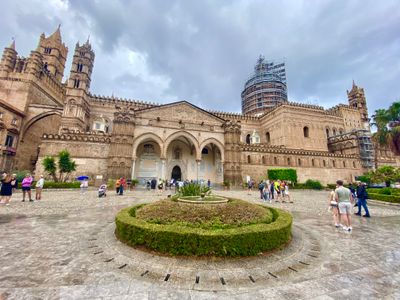
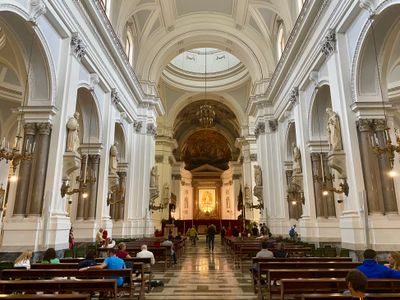
On the way back to the car from the Palermo Cathedral we took the Via Vittorio Emanuele, which is a main street running through the heart of the historic district in Palermo. It's a good reference point, but isn't the most interesting street to walk on, and we eventually turned onto Via Maqueda. It was bustling with people, and while it looked like it may be open for vehicles, there were tons of people in the streets. Via Maqueda was filled with restaurants and shops, and we considered grabbing an aperol spritz but opted to head straight to the car.
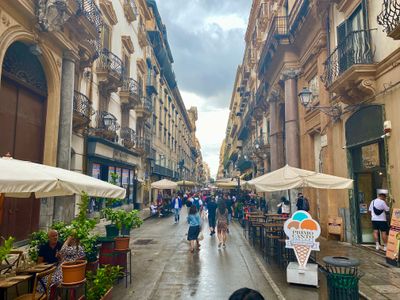
We made it back to the car after having to take shelter for 10 minutes during another torrential downpour. At over 5 and half miles, we had covered quite a bit of ground, and managed to dodge the worst of the weather and outside of touring the grounds at the Royal Palace, we had seen everything I had earmarked for the trip.
